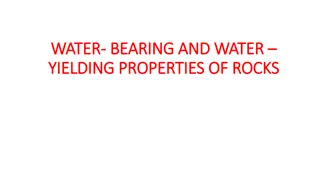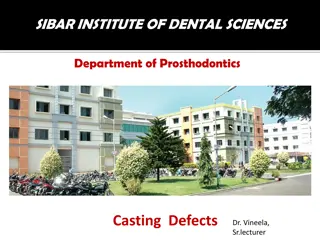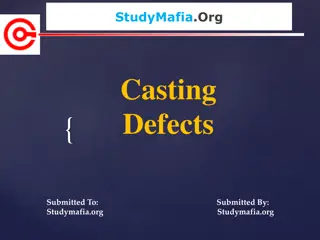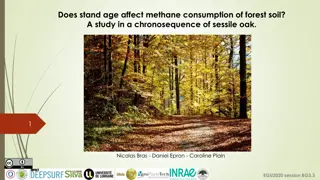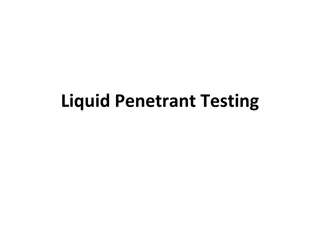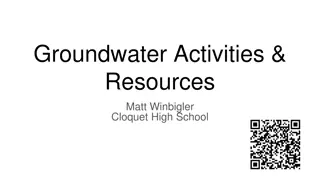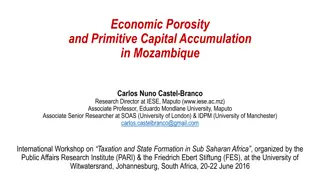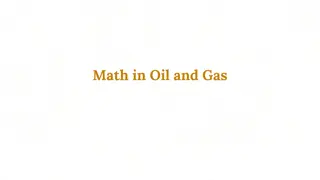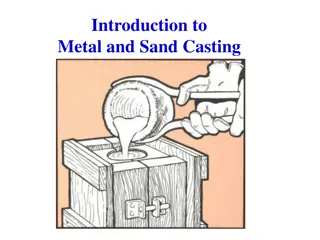Understanding Principles and Practices of Water Management in Agriculture
This course delves into the field water cycle, water movement in soil and plants, soil-plant-water relationships, water dynamics in the soil-plant-atmosphere system, soil composition, soil texture classification, permeability factors, density of soil solids, total porosity assessment, and energy asp
8 views • 62 slides
Understanding Soil Phase Relationships and Properties
Soil consists of solids, liquids, and gases with voids in between. Water content, void ratio, porosity, specific gravity, mass specific gravity, degree of saturation, and unit weight are key parameters in characterizing soil behavior. Relationships between these properties are crucial for geotechnic
3 views • 8 slides
Understanding the Water Bearing and Yielding Properties of Rocks
This informative content delves into the significance of porosity and permeability in rock formations, detailing primary and secondary porosity types, factors influencing porosity, and the concept of Darcy's Law governing groundwater flow. It emphasizes the relationship between effective porosity, r
1 views • 13 slides
Understanding Soil and Foundation Engineering Fundamentals
Soil plays a crucial role in engineering, with unique properties that influence its mechanical behavior. This article covers the formation of soil, types including residual and transported soils, and the phases of soil in nature. Explore phase diagrams, relationships between volume, void ratio, and
0 views • 20 slides
Common Casting Defects in Prosthodontics: Causes and Prevention
Casting defects in prosthodontics can result from errors in the casting procedure, leading to issues like distortion, surface roughness, porosity, and incomplete detail. Various causes such as stress relaxation during wax pattern preparation can contribute to distortion, while factors like air bubbl
5 views • 27 slides
Understanding Casting Defects in Metal Casting Processes
A casting defect is an undesirable irregularity in metal casting processes that may require correction or elimination. This article discusses the definition, types, remedies, causes, prevention, and conclusion of casting defects. It covers shrinkage defects, gas porosity, pouring metal defects, meta
0 views • 21 slides
Study on Methane Consumption in Forest Soil Across Stand Ages
The study investigates the impact of stand age on methane consumption in forest soil using a chronosequence of sessile oak stands. Findings show that methane consumption varies with air-filled porosity and mineral nitrogen rather than stand age. Spatial variability in methane consumption is linked t
0 views • 5 slides
Safe Facilities and Equipment Guidelines for Food Service Industry
This chapter covers essential guidelines for safe facilities and equipment in the food service industry. Topics include requirements for flooring, handwashing stations, food-contact surfaces, lighting, garbage handling, and more. Key terms such as porosity, air gap, coving, NSF, backflow, and resili
0 views • 35 slides
Understanding Soil: Formation, Composition, and Impact on Plant Growth
Soil is more than just dirt; it plays a vital role in supporting plant growth. Formed through the weathering of rocks and organic activity, soil consists of rock fragments, clay, and organic material. The process of soil formation begins with the erosion of bedrock, leading to the development of dif
0 views • 12 slides
Understanding Liquid Penetrant Testing: Methods, Advantages, and Applications
Liquid Penetrant Testing (PT) is a non-destructive testing method used to detect surface flaws in various materials. This method involves applying a colored or fluorescent dye to the surface, revealing any defects through capillary action. PT is widely used due to its effectiveness in detecting crac
0 views • 21 slides
Human Impacts on Groundwater Systems in Minnesota: A Study of Interactions and Solutions
Explore the intricate relationships between human activities and groundwater systems in Minnesota through investigations, models, and technological solutions. Utilize place-based evidence, including insights from Minnesota American Indian tribes and cultures, to understand and address climate change
0 views • 7 slides
Understanding Economic Porosity and Primitive Capital Accumulation in Mozambique
In this presentation by Carlos Nuno Castel-Branco, the concept of economic porosity and its consequences in Mozambique are examined. The discussion includes the historical rationale for economic porosity, magnitude of economic dynamics, taxation issues, investment patterns, capital flight, and publi
0 views • 36 slides
Understanding Key Factors in Oil and Gas Industry
Explore essential concepts in the oil and gas sector such as oil volume at surface conditions, gas volume at standard conditions, porosity measurement, water saturation, and formation volume factor. Learn how to calculate stock tank oil volume, gas in place, and interpret crucial parameters for rese
0 views • 12 slides
Overview of Metal and Sand Casting Processes
Metal and sand casting are ancient manufacturing techniques dating back to 4000 B.C., allowing the production of complex shapes in various metals. The casting industry produces millions of kilograms of castings annually, primarily using materials like gray iron, ductile iron, aluminum alloys, and co
0 views • 13 slides
Reservoir Modeling Using Gaussian Mixture Models
In the field of reservoir modeling, Gaussian mixture models offer a powerful approach to estimating rock properties such as porosity, sand/clay content, and saturations using seismic data. This analytical solution of the Bayesian linear inverse problem provides insights into modeling reservoir prope
0 views • 10 slides


